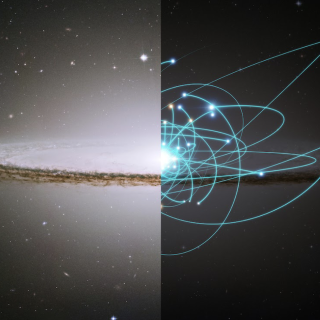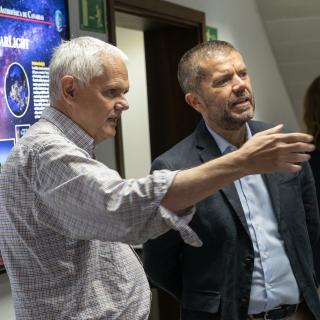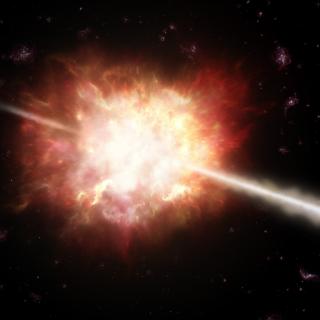La XII Escuela Predoctoral de Astrofísica, organizada por la Red Doctoral Europea de Astrofísica (EADN son sus siglas en inglés) con el patrocinio de Iberia, se ha venido celebrando desde el día 6 de septiembre y hasta hoy, día 17, en la Facultad de Físicas de la Universidad de La Laguna. En esta edición ha estado dedicada al estudio de las estrellas binarias.
Las Escuelas de la red EADN están orientadas a estudiantes de doctorado que se encuentren en sus dos primeros años de trabajo de tesis. Dado el papel fundamental que desempeña el estudio de las estrellas binarias en Astronomía, el tema de esta Escuela resulta de interés para un gran número de doctorandos, que participan en un curso intensivo, abierto a un máximo de 40 participantes (en esta ocasión procedentes de más de diez países). Durante la Escuela los estudiantes pueden ampliar sus conocimientos sobre un campo clave dentro de la Astrofísica de la mano de seis especialistas internacionales en el tema seleccionado.
Entre los profesores invitados este año destaca el Prof. Józef Smak, del Centro Astronómico Copérnico de Polonia, y experto en un tipo de estrellas binarias llamado "variables cataclísmicas" por los procesos explosivos que se dan en ellas y que pronunció la charla inaugural de la Escuela. Participó también el Profesor C. Bert de Loore, de la Universidad Libre de Bruselas (Bélgica), autor de varios libros dedicados al estudio de la evolución de los sistemas binarios y veterano participante en esta serie de Escuelas EADN. Para un doctorando, el interés de esta Escuela no está sólo en profundizar sus conocimientos sobre una rama concreta de la Astronomía, sino también "en exponer el resultado de su propio trabajo y en aprender a presentarlo en público de modo adecuado. No es evidente para un estudiante de doctorado ser capaz de comunicar bien una idea, aprovechando al máximo los medios técnicos a su alcance", subraya De Loore. Este tipo de reuniones supone un incentivo y motiva a los jóvenes científicos en su trabajo de investigación, aspecto éste que el Profesor Klaus Strassmeier, de la Universidad de Viena (Austria) y que participa en la Escuela por primera vez, considera "especialmente importante en ciencia, en particular cuando se está aún empezando en la aventura de la investigación".
Las estrellas binarias
Más de la mitad de las estrellas se forman y evolucionan en el seno de sistemas binarios o múltiples, por lo que su estudio es esencial para entender la evolución estelar. En esta duodécima edición de la Escuela Predoctoral de Astrofísica (EADN) se han tratado temas como la determinación de parámetros absolutos y su aplicación en la comprobación de modelos estelares, la evolución de las estrellas binarias, los fenómenos de acreción y otros efectos de transferencia de masa, etc.
La física de estos sistemas estelares ha experimentado recientemente importantes avances, tanto en el campo teórico como en el observacional. Precisamente, uno de los más recientes resultados científicos de investigadores del IAC, la comprobación del origen de los agujeros negros como resultado de la explosión de una estrella supermasiva, se ha realizado en un sistema binario, en el que una de las dos estrellas del sistema se enriqueció con material procedente de la explosión de su compañera. "Hasta ahora los astrónomos conocían bien los procesos que desencadenan la formación estelar, pero no habían podido confirmar la hipótesis de que uno de los posibles finales de las estrellas muy masivas fuera el convertirse en agujero negro. La circunstancia de que la estrella estudiada se encontrase en un sistema binario permitió a los astrónomos confirmar algo que sospechaban desde hacía varios años", concluye el Prof. De Loore.


